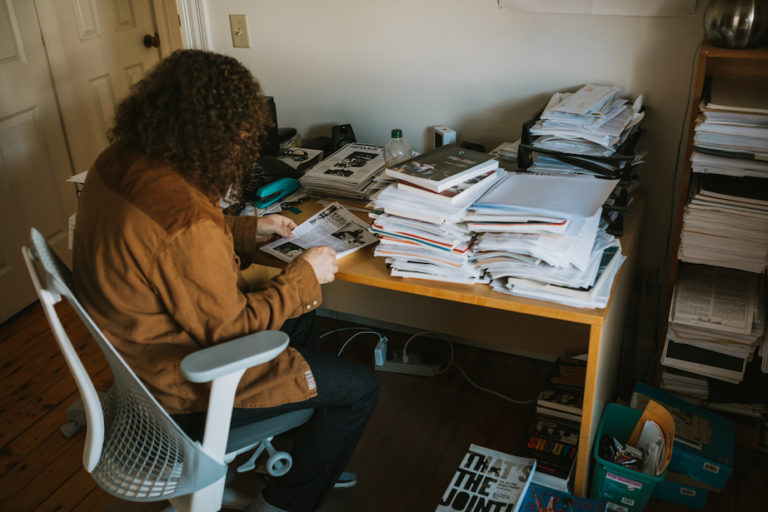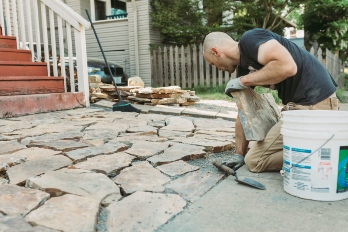It’s almost guaranteed that your home inspector will find problems worth bringing to your attention. But don’t worry too much. It’s guaranteed because imperfection is normal. Up to a point, anyway. In most cases, you’ll be able to work with it.
For a heads-up on what to expect, check out this list of the top nine home inspection problems nationally, year after year, according to the American Society of Home Inspectors (ASHI).
You’ll also learn a little about what these problems might mean for your purchase agreement, your wallet, and your new-homeowner to-do list. But so much depends on your location and the specifics of the home — you’ll need tailored advice from your home inspector.
“It is part of a home inspector’s responsibility to give you a sense of how significant these issues are or could be, and how important it is to follow up,” says Bill Loden, the Alabama-based inspector we consulted. A past president of ASHI, he also used to inspect solid rocket boosters for NASA.
So make sure you hire a great inspector who’s not only NASA-thorough, but also good at communicating what he finds.
1. Poor surface grading and drainage
This is by far the most common problem home inspectors find. When water pools around the house instead of flowing away from it, it can eventually undermine the structure, cracking the slab or footings. Water might penetrate the basement or crawlspace, and that can create a mold problem, among other things.
“It goes back to the construction process, oftentimes,” says Loden. “It costs money to do grading. I see new construction where water will pond right next to the house and not flow away at all. Sometimes houses started out okay, but the gutters were removed and they weren’t put back up, or they’re clogged, things like that.”
What it means: Correcting poor drainage can be as simple as adding downspout extenders. But it can also require costly fixes. For example, building a retaining wall to guide water away from the house, or installing a drainage system in the basement. “If there’s signs of structural deterioration,” says Loden, “you probably need to see what it’s going to cost to correct it.”
2. Improper and undersized electrical wiring
The electrical systems of older homes may need upgrades. Beyond that, home inspectors often find dangerous overloads, improper grounding, and bad connections. Aren’t there laws against these kinds of things? Well, yes, but a surprising number of people try to DIY electrical work, Loden says.
Of all the scary things he sees, the most common is DIY grounding. “If I’m looking at a house built before 1965, the electrical systems are often ungrounded,” he says. “People will try to upgrade it, and it’s done improperly, or sometimes in an outright dangerous manner.”
What it means: Safety issues should be fixed before you move in. If the system is simply out-of-date, you might not be legally required to meet current codes unless you make other upgrades to the house, Loden says. However, if you’re like most Americans, you have a lot of appliances and devices. For convenience and safety, you should plan on upgrading the system.
3. A bad roof
Shingling a roof is expensive, so many homeowners put it off. Inspectors regularly see roofs that are completely shot. On a smaller scale, damaged shingles or improper flashing can create leaks, and even a small leak can eventually do a lot of damage.
“People may have an inkling that there are problems up there, but they just try to ignore that until they see water dripping through,” says Loden. “It’s not a good idea to wait. It’s kind of like the brakes on your car. Do you wait till they quit, till they don’t work one day?”
What it means: It’s not too big a deal to repair damaged shingles or caulk a few leaky spots. After you close, do that stuff ASAP to avoid bigger, more expensive problems down the road. However, if it’s time or nearly time for a whole new roof (which can easily cost $10,000 or more), you might want to negotiate a price break.
4. Poor or old heating systems
Replacing a heating system is another expensive project, and even mere maintenance isn’t exactly cheap, so malfunctioning or just plain tired systems are another common problem. Home inspectors often see unreliable controls, unsafe exhaust flues, and cracked heat exchangers. These are a real threats to health and safety.
“Sometimes I can tell just by looking at a unit if it’s been neglected,” says Loden, referring to both heating and cooling systems. “Those systems should be serviced every year. If you don’t tune them up, it will create more wear, and it will make it less energy efficient. So it’s going to cost more to heat or cool that property.”
What it means: Safety issues should of course be fixed before you move in. If the system is just old, plan to start saving for a new one. “If the unit is still working properly, I can’t call it out as defective,” says Loden. “But I’ll let you know that, in all likelihood, you’re not going to get another 5 or 10 years out of this thing. That’s got to be in your budget.”
5. Lousy overall maintenance
Peeling or dirty paint, crumbling masonry, battered light fixtures, broken appliances … Whether it’s because of money, time, or plain-old neglect, general maintenance gets away from a lot of homeowners. You’ve probably noticed this while home shopping!
General neglect can be a red flag, says Loden. What else can’t you see? But usually, he says, “it’s just a lot of minor stuff.”
What it means: “Minor stuff” may be largely cosmetic (at least for now), but don’t underestimate what it will take to neaten up the place. “A lot of times,” says Loden, “I’ll tell my clients, look, you have a long list of things that have to be done. They’re all kind of small. But if you add them all up, it can be a big chunk of money.”
6. Structural problems
Construction flaws or neglected issues like poor drainage can damage foundations, floor joists, rafters, and more. These kinds of things are more common in older homes, where they’ve had more time to develop. Structural issues aren’t always serious, but they can turn serious if the cause isn’t addressed.
“I see a lot of homes with small cracks and that kind of thing, but they’re typically pretty meaningless,” says Loden. “I’ll point them out, but I won’t write them up necessarily. I’ll tell you if I think there’s a problem.”
What it means: If your inspector is concerned, don’t take any chances. A foundation repair, for example, can cost tens of thousands of dollars. Before you finalize your purchase agreement, bring in a structural engineer to take a closer look, says Loden. Be sure to hire an actual structural engineer with “PE” (professional engineer) licensure — not a structural repair contractor.
7. Plumbing problems
Plumbing problems can include old or incompatible piping, defective fixtures and waste lines, natural gas leaks, and DIY jobs that are accidents waiting to happen.
On the DIY front, Loden says, “People have the feeling that, hey, I’ve got a saw, and I know how to smear glue on pipe, and I can put these joints together and do it myself. I see a lot of that. Making sure that the plumbing has been installed professionally is a critical issue.”
In one home he inspected recently, he found a small, hidden leak in an improperly installed pipe that had caused at least $25,000 in damage.
Most older houses have experienced some kind of water damage at one point or another, he says. “You find stains on the floors. Usually, it’s around toilets, where the wax seals go bad, things like that.”
What it means: To avoid giant repair bills later, don’t put off “small” fixes noted in your inspection report. If there’s any serious rot, consider getting an estimate on the repair before you finalize your purchase agreement. “If a toilet doesn’t feel stable or something like that, then that floor is probably going to have to be replaced,” Loden says. Mold is a potential problem too.
8. Exterior issues
Flaws in windows, doors, and walls are openings for water and air. Poor caulking and/or weather stripping mean the house may be cold and drafty.
Loden says that a chronic issue where he lives is exterior doors with no flashing on the sill at the bottom, just caulk. (Flashing is sheet metal that’s used to weatherproof joints and angles.) That’s not enough protection from the weather. It can cost several thousand dollars to repair the eventual water damage.
What it means: Any exterior issue that involves moisture penetration should be high on your to-do list once you close on your new home. If there’s serious rot involved, consider getting an estimate on the repair before you finalize your purchase agreement. You inspector might call out a mold concern too.
9. Poor ventilation
“Poor ventilation” can refer to a range of issues that are likely to create a build-up of moisture, mold, toxins, or, in the case of a roof, heat. These can damage your house or your health. Tightly sealed homes that haven’t been designed equally well for ventilation can present moisture and air-quality problems.
Ventilation needs vary a lot by location. In arid Arizona, bathrooms don’t even need exhaust fans, for example. But in the Northeast, it’s critical to vent moist bathroom air to the outdoors — not into the attic, which inspectors sometimes see. “If you vent it into the attic,” says Loden, “it’s going to condense on the structure. It’s not a pretty sight.”
What it means: Ventilation problems and their fixes can be complicated. Be sure you understand your inspector’s assessment and recommendations. A moisture fix might be as simple as installing a bathroom fan. A too-hot attic might need a roof vent so shingles don’t overheat and become brittle. A crawlspace that shouldn’t be ventilated might need to be encapsulated — a common fix in Loden’s area.




